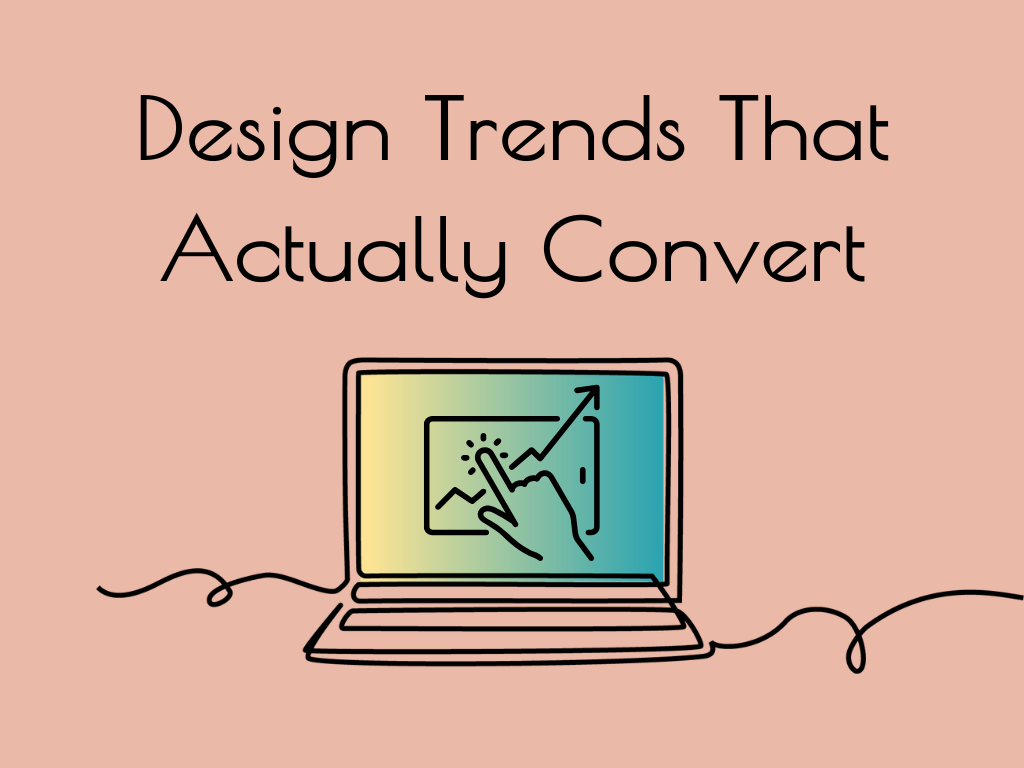5 Design Trends That Actually Convert

5 Website Design Trends That Convert Visitors into Customers
Understanding the Importance of Website Design in Conversion Rates
Your website isn’t just a digital storefront—it’s often the first and most lasting impression potential customers have of your brand. Studies show that 75% of people judge a company’s credibility based on website design alone (Source: Stanford Web Credibility Research). That means a poorly designed site could be costing you business before a visitor even reads your content or explores your offerings.
Good website design goes beyond aesthetics. It serves as a strategic tool to guide visitors through your sales funnel, keeping them engaged and directing them toward conversion points. From the layout and navigation to color psychology and mobile responsiveness, every detail plays a role in how to convert visitors into customers. Below, we explore five website design trends that not only enhance user experience but also drive real results.
1. Embracing Minimalism: Less is More for User Engagement
Minimalism in web design is more than a passing trend—it’s a proven strategy to convert visitors. A cluttered site overwhelms visitors, while a clean and intentional design keeps them focused on what matters most: your message and call-to-action.
Minimalist websites emphasize:
- White space for improved readability and focus
- Clear, high-contrast typography
- Simple navigation to streamline user experience
- Fewer elements that load faster, improving site speed
Google’s homepage is the ultimate example of effective minimalism. Its design is stripped down to the essentials, ensuring users find exactly what they need without distractions. Studies suggest that websites with simpler designs tend to convert visitors more effectively than visually complex ones.
2. The Power of Responsive Design: Adapting to Every Device
With mobile devices driving more than half of global website traffic in most cases, ensuring your site is responsive is crucial to effectively converting visitors. A well-planned mobile experience keeps users engaged, reduces bounce rates, and increases the likelihood of conversions.
Responsive design ensures that your site looks and functions seamlessly across all screen sizes, from desktops to smartphones. A mobile-friendly website helps convert visitors by:
- Lowering bounce rates
- Improving search engine rankings (Google prioritizes mobile-first indexing)
- Enhancing user experience
If your website isn’t optimized for mobile, you’re likely losing potential customers. Test your site’s mobile-friendliness using Google’s recommended Lighthouse tool.
3. Leveraging Color Psychology to Influence Visitor Behavior
Color isn’t just a design choice—it’s a psychological tool that can help convert visitors into customers. Studies indicate that color improves brand recognition and affects purchasing decisions.
Here’s how different colors impact user perception:
- Blue – Builds trust and reliability (often used in finance and healthcare websites)
- Red – Creates urgency and excitement (great for sales and limited-time offers)
- Green – Symbolizes growth and tranquility (popular for wellness and eco-friendly brands)
- Orange – Encourages action and enthusiasm (frequently seen in CTA buttons)
Choosing the right color palette for your website can subtly guide visitors toward desired actions, ultimately helping convert visitors into customers.
4. Incorporating Interactive Elements for Enhanced User Engagement
Interactive elements make your website feel dynamic rather than static. Features like animations, chatbots, and micro-interactions can significantly boost engagement and help convert visitors into leads and customers.
Here’s why interactive elements work:
- They make content more memorable and engaging
- They encourage user participation, increasing conversion rates
- They provide valuable insights into visitor behavior and preferences
For example, SaaS companies often use pricing calculators to help potential customers determine costs based on their needs. This not only adds value but also increases the chances of conversion by personalizing the user experience.
5. Personalization: Delivering a Tailored User Experience
One-size-fits-all web experiences are becoming outdated. Today’s users expect websites to adapt to their preferences, browsing history, and behavior. Personalization can take many forms, including:
- Recommending products based on past purchases
- Displaying location-specific content
- Sending personalized email follow-ups after site visits
Amazon’s recommendation engine is a prime example of personalization done right. By analyzing user behavior, the site suggests relevant products, leading to higher engagement and conversion rates. Implementing even small personalization tactics on your site can help convert visitors into loyal customers.
Your website should be more than just visually appealing—it should be strategically designed to convert visitors into customers. Embrace minimalism, ensure mobile responsiveness, leverage color psychology, incorporate interactive elements, and personalize user experiences to create a high-performing site that drives business results.
If you’re ready to take your website to the next level, consider working with a professional web design team that understands both aesthetics and conversions.
Need help? Contact Cloudbreak Creative to build a site that not only looks good but also delivers measurable results. Reach out today for a free consultation.